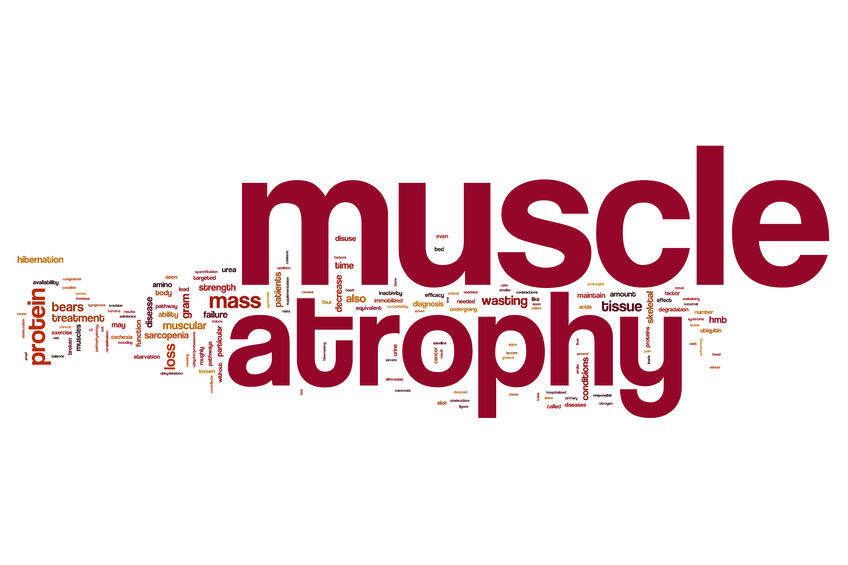 Muscle atrophy is simply the shrinkage of muscle fibers caused by lack of regular physical activity. The affected muscles will often appear smaller than normal due to loss of muscle tissue. If a muscle remains inactive for a long time without any use, the body responds by breaking it down to conserve energy. Muscle atrophy is very common among people who live a sedentary lifestyle or stay immobile for an extended duration of time while recovering from severe illness or injury.
Muscle atrophy is simply the shrinkage of muscle fibers caused by lack of regular physical activity. The affected muscles will often appear smaller than normal due to loss of muscle tissue. If a muscle remains inactive for a long time without any use, the body responds by breaking it down to conserve energy. Muscle atrophy is very common among people who live a sedentary lifestyle or stay immobile for an extended duration of time while recovering from severe illness or injury.
Muscle atrophy can be reversed through physical therapy and making certain lifestyle changes such as getting regular exercise. In this article, we will be looking at the causes of muscle therapy, its symptoms, and how it can be reversed through muscle therapy.
Types of Muscle Atrophy
- Disuse Muscle Atrophy
Muscles will always grow to meet the need if you are always active and exercising. However, the body might start breaking down and recycling your muscle tissue if you stop using it for a while. Instead of wasting energy feeding and maintaining your muscles, they are channeled to other systems in your body to aid with respiration and digestion. As a result, your muscles decrease in both size and strength, leading to muscle atrophy.
- Neurogenic Muscle Atrophy
A damaged nerve can cause muscle atrophy, as it can no longer trigger muscle contraction that helps in its movement. The human body is very conservative and works on the principle that what is not used is recycled. It believes that a muscle lacking the nerve that triggers muscle contraction is no longer needed and therefore, it will break down the tissue leading to muscle atrophies.
What Conditions Can Cause Muscle Atrophy?
- Prolonged Inactivity
Issues such as bed rest due to injuries, illness or surgery can cause lack of muscle activity. Muscle wasting may start to develop within one week in older adults who are on bed rest. As a result, patients may experience a significant decrease in muscle strength during this period.
- Aging
Muscle loss may occur gradually because of aging. An individual may start to develop changes in leg muscle mass after the age of 50 years. This may be contributed by the fact that people tend to perform less physical activity as they age. Their reduced physical strength may only limit them to walking around the neighborhood or moving around the house to perform simple tasks.
- Malnutrition
Individuals who suffer from malnutrition have a significantly low amount of nutritional intake. This means that they don’t get enough nutrients from the food they eat. As a result, the body is forced to break down muscle tissue to release energy. If this action continues for a long time, it can cause muscle atrophy due to muscle wasting. Malnutrition can also be caused by persistent nausea, cancer and anorexia nervosa.
- Multiple Sclerosis
Multiple sclerosis is a type of autoimmune disease that causes damage to myelin, which surrounds the nerve fibers. It causes significant damage to the nerves that facilitate muscle contraction. This means that the affected nerve will lose its ability to trigger muscle movement. As a result, it leads to muscle atrophy and the rate of muscle loss will depend on the severity of the damage.
How can Muscle Therapy Help?
Muscle atrophy is a reversible condition that can be addressed through muscle therapy. It is a unique blend of modalities tailored to meet the needs of a particular individual. The session is designed to help improve the movement and performance of the muscles. You may start seeing significant changes in muscle mass after a few weeks of muscle therapy. It also helps improve posture and decrease the pain that might be caused by stiff joints.
A professional therapist will set out a maintenance program for the prevention of muscle atrophy in the future. The sessions may include instructions on working with stretches or tennis balls that complement the therapy received and the strategies involved between sessions. Muscle therapy is a muscle-skeletal treatment that treats the whole body as a whole but gives you the most beneficial treatment by targeting specific injuries. The stretches and rehabilitation techniques involved in muscle therapy help to rebalance the body and prevent further susceptibility to injuries.
Muscle therapy not only improves the function and performance of the muscles but also helps to maintain good health. It activates signaling pathways and promotes the synthesis of muscle protein, which in turn regulates metabolism and improves the function of muscle fibers. Rehabilitation is also a crucial part of recovery since you need to be prepared both physically and psychologically to stay motivated throughout the muscle therapy sessions.

